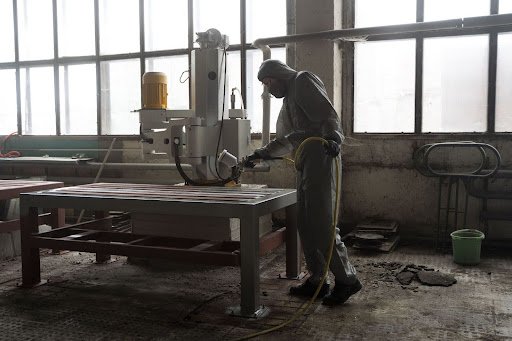Canada’s auto sector is renowned for its strength, accuracy, and ingenuity. As car manufacturing evolves and sustainability concerns loom larger, businesses everywhere in the country are looking towards one solution that holds the answer to both: laser welding.
Laser welding is quick, clean, and precise—and it’s about to become a key component of the Canadian automotive sector’s approach to producing safer, lighter, and more efficient vehicles. From electric vehicle battery packs to ultrahard chassis components, this new welding technology is transforming manufacturing lines nationwide.
Here’s a closer inspection of how laser welding is climbing the ranks of Canadian auto manufacturing, and what it foretells for the industry’s future.
Why the Auto Industry Is Thirsty for Laser Welding
Modern automobiles are not made of mere metal and rubber. They consist of an alloy of materials—aluminum, high-strength steel, composites—all of which are engineered to save weight, enhance security, and comply with demanding fuel efficiency and emissions targets.
Conventional welding techniques are short on these demands. They tend to generate too much heat, warp, or constrain the manner in which materials are assembled.
Laser welding addresses all but one of these issues:
- It produces clean, accurate welds with minimal heat distortion
- It can weld disparate metals, critical to hybrid and electric vehicles
- It enables automation and high-rate manufacturing
- It minimizes grinding or finishing needs, conserving time and money
For Canadian manufacturers searching for speed, quality, and sustainability reconciliation, laser welding is the intelligent way forward.
Increased Electric Vehicle (EV) Production
CCanada is quickly expanding its EV production capabilities, and laser welding is at the forefront.
EVs also present welding challenges unlike any other. Their battery covers, connectors, and heat exchangers tend to need aluminum components welded to very high tolerances. Laser welding is equal to the task, giving these jobs precision, producing neat, leak-free joints that are crucial for battery safety and performance.
Automotive parts suppliers in Ontario, Quebec, and British Columbia are already employing laser welding to:
- Join battery trays and modules together by stamping
- Weld thin-walled aluminum parts without warping
- Make safe, rust-free welds in high-voltage parts
With multiple new EV assembly plants and component factories under construction throughout Canada, the demand for laser welding systems can only increase. Similar to how an Event Planner in Destination Events coordinates every detail with precision for a flawless experience, laser welding ensures accuracy and dependability in every weld.
Assisting Lightweight Targets
Perhaps the best method to improve fuel efficiency and compliance with emissions standards is by reducing vehicle weight. However, lighter components are more difficult to weld based on conventional welding techniques, which involve too much heat or thicker material to last longer.
Laser welding makes lightweighting strategies more feasible. It permits thin sections to be welded without the loss of toughness. It also accommodates new, lightweight materials like advanced high-strength steel and aluminum alloys.
On the factory floor, laser welding enables designers and engineers to design smarter — not harder—vehicles.
Enhancing Automation in Canadian Plants
Automation is the expansion of automotive production and laser welding is ideally suited to robotic production lines.
Most Canadian factories employ robot-guided laser welding systems to boost speed, precision, and consistency. The systems can make intricate welds continuously without interruption, save time, and get more done.
Advantages of automation using laser welding are:
- Less rework and defects
- Real-time quality monitoring with sensors
- Improved alignment with Industry 4.0 and smart factory objectives
- Decreased use of manual labor for welding, whose supply is dwindling in length
Since plants desire to have maximum output and minimum cost of operation, laser welding offers a highly scalable solution.
Increasing Sustainability and Reducing Waste
Environmental responsibility is of top importance to the automotive sector in Canada. Laser welding makes its contribution in many ways.
First, it requires less energy per weld than most conventional processes. Second, it generates fewer emissions and less post-weld cleanup, reducing both environmental and in-plant footprint. Third, high precision results in less scrap metal, therefore less waste.
Collectively, these benefits enable Canadian manufacturers to satisfy internal sustainability objectives as well as external regulation, yet provide best-in-class product quality.
Training and Workforce Development
As laser welding machines make more and more room for themselves on shop floors, the demand for skilled welders and technicians to operate and repair them is mounting.
Several manufacturers are investing in training programs for shop floors. Some others are collaborating with technical institutes and colleges to assist in the development of a pipeline of laser welding professionals.
This shift also opens the door to a new type of career in manufacturing—one that meshes hands-on ability with technology. New workforce workers entering the workplace for the first time can now be taught how to communicate with computer-controlled systems, robotics, and computer-based quality inspections, making work more interesting and state-of-the-art. Just as Roofing Contractors Sacramento CA must adapt to new materials and technologies, the welding industry is evolving its workforce to meet future demands.
Last Words
Laser welding is no longer specialized. It’s fast becoming the norm in the way Canada constructs the next generation of vehicles—from electric sedans to gas-efficient trucks. With its speed, accuracy, and greener nature, it’s well-suited for an industry that inhales optimization.
While the auto industry races into a new gear of cleaner, lighter, and smarter cars, Canadian manufacturers are gaining their advantage with laser welding technology. For welding Hamilton, the boom has already started—and there’s no slowdown in sight.


